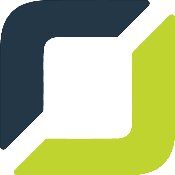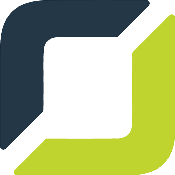AI agents are gaining traction among executives who recognize the need for intelligent automation but lack a clear game plan. These systems promise real impact on operations and decision-making, yet most companies remain stuck experimenting with generic tools or isolated pilots.
Without a clear structure in place, they risk wasting investments and stalling momentum. Utilizing this roadmap provides a practical approach for AI agent implementation into core operations, starting with alignment at the top and ending with measurable performance at scale.
What Makes AI Agents Different Than Traditional AI Models
 AI agents operate with intent and autonomy. Traditional models process data and return outputs; AI agents take action toward defined goals, often across systems and with minimal human prompting. Think of them less like calculators and more like team members who learn, make decisions, and collaborate.
AI agents operate with intent and autonomy. Traditional models process data and return outputs; AI agents take action toward defined goals, often across systems and with minimal human prompting. Think of them less like calculators and more like team members who learn, make decisions, and collaborate.
Unlike static models that require manual input and supervision, AI agents can initiate tasks, learn from past interactions, and adjust behavior over time. They integrate with enterprise tools, use memory to retain context, and can complete multi-step processes such as monitoring compliance workflows, automating claims triage, or responding to customer inquiries with historical insight.
At Orases, we view AI agents as operational systems, not technology add-ons. Our focus remains on aligning them with your data, processes, and objectives so they deliver measurable business outcomes rather than surface-level novelty.
Phase 1: Strategic Readiness & Executive Alignment
Success with AI agents starts well before deployment, and the process begins with an honest evaluation of your organization’s readiness across several domains: data quality, governance structure, cultural openness, and security posture. They serve as the groundwork for everything that comes next.
The Orases ASCEND (AI Strategy Consultation for Executive Navigation & Development) AI Readiness Assessment addresses all of these areas, giving executive teams a clear picture of current conditions and surfacing any gaps that may interfere with adoption. Many organizations that skip this phase encounter roadblocks later; incompatible systems, unclear accountability, or misaligned expectations between departments are common consequences.
When alignment is missing, progress stalls, then results suffer, and so does buy-in. Without shared goals, cross-functional support, and clearly defined measures of success, even advanced AI deployments fall short.
Executives don’t need technical expertise to lead AI adoption. The most effective leaders focus on frameworks, cross-functional collaboration, and clear communication. Orases’ dedicated CAIO partners directly with senior leadership to deliver maturity scorecards, opportunity maps, and executive education sessions. With these tools, organizations can begin with focus and purpose.
Phase 2: Integration With Business Workflows
Once a strategy is established, the focus shifts to operational integration. The challenge is matching the right AI agents with the right business functions. Projects often fail here due to poor alignment between the technology and the process it is meant to support.
Strong candidates for agent-based automation include customer support, document classification, contract review, and compliance monitoring. Each of these areas benefits from speed, pattern recognition, and consistency. Building the right solution begins with understanding how work gets done today, then shaping an agent that fits those routines.
Deployment introduces change, and without solid preparation, teams can resist or disengage. IT, operations, compliance, and business leads must work in sync to embed AI in ways that make sense for each group.
 Projects launched without this alignment often create friction, confusion, or even rejection by end users.
Projects launched without this alignment often create friction, confusion, or even rejection by end users.
The most frequent cause of AI project failure isn’t flawed technology; poor coordination, siloed leadership, and fragmented systems are far more damaging. Our method includes involving the right departments from the beginning. We help organizations design agents that function within real-world environments, not in isolation.
Phase 3: Performance, Governance, & Optimization
Launching an AI agent is only the beginning of the process; long-term results depend on continual monitoring, adjustment, and oversight.
Effective programs include KPIs, feedback loops, and real-time dashboards to assess how agents are performing against expectations. Important elements, including response times, decision accuracy, and operational impact, must all be tracked. Having the right metrics in place simplifies everything from gap analysis to behavior adjustment and retraining.
Governance must operate directly alongside performance management, which is why AI agents must act within policy boundaries, maintain data privacy standards, and meet compliance requirements.
Failure to manage these factors leads to risk that can outweigh any benefit. That’s why oversight bodies, audit logs, and access controls aren’t optional; they’re the mechanisms that make AI viable for serious business use.
Trust is earned through transparency and consistency; customers and employees alike want to know AI tools are safe, explainable, and accountable. Optimization is continuous, and as processes shift or new data becomes available, agents should be updated. Feedback from users, performance metrics, and new business needs all feed into regular system refinement.
Common Missteps That Derail AI Agent Implementation
Setbacks can derail any implementation process. A pattern of recurring mistakes often undermines AI agent efforts, including:
- Beginning development without conducting a readiness assessment
- Failing to assign executive sponsorship or define business accountability
- Running on disjointed tech stacks or siloed data
- Ignoring change management and team engagement
- Misjudging the effort required to prepare and maintain usable data
Every one of these mistakes stems from process gaps, not technology shortcomings. Without structure, AI becomes another stalled initiative. With the right groundwork, success becomes repeatable.
Start Your AI Agent Implementation Roadmap With Orases
 AI agents can significantly contribute meaningful operational value. However, they require more than code to be effective; they need alignment, structure, and thoughtful execution.
AI agents can significantly contribute meaningful operational value. However, they require more than code to be effective; they need alignment, structure, and thoughtful execution.
Orases works closely with leadership teams to build AI solutions that are customized to business workflows, data environments, and strategic priorities. Our ASCEND Framework helps you assess your organization’s readiness, identify the right use cases, and build custom solutions that scale with your needs.
To begin building a program that delivers measurable value, connect with our team today. Call us at 1.301.756.5527 or schedule a consultation online to get started.






